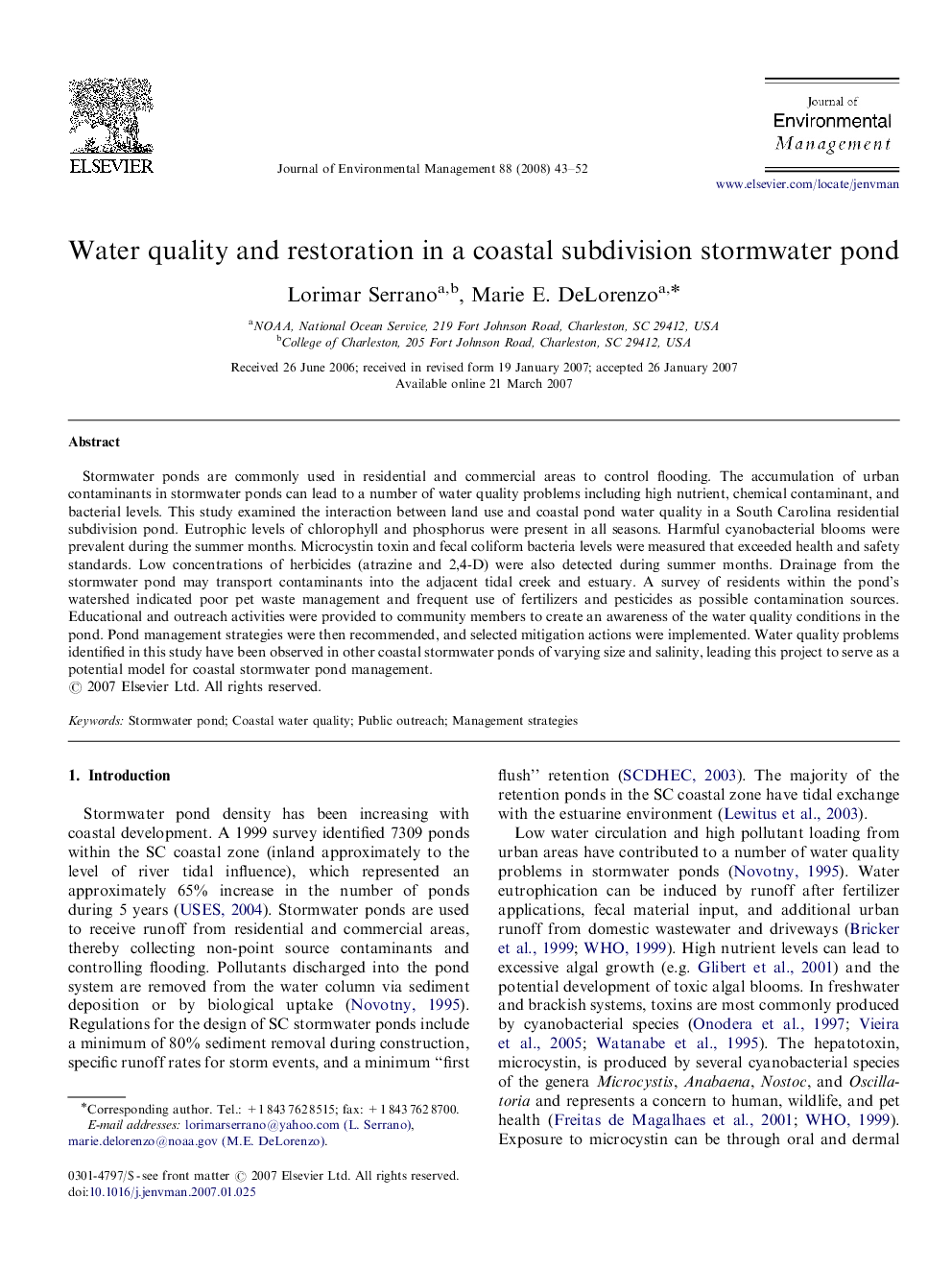| Article ID | Journal | Published Year | Pages | File Type |
|---|---|---|---|---|
| 1058554 | Journal of Environmental Management | 2008 | 10 Pages |
Stormwater ponds are commonly used in residential and commercial areas to control flooding. The accumulation of urban contaminants in stormwater ponds can lead to a number of water quality problems including high nutrient, chemical contaminant, and bacterial levels. This study examined the interaction between land use and coastal pond water quality in a South Carolina residential subdivision pond. Eutrophic levels of chlorophyll and phosphorus were present in all seasons. Harmful cyanobacterial blooms were prevalent during the summer months. Microcystin toxin and fecal coliform bacteria levels were measured that exceeded health and safety standards. Low concentrations of herbicides (atrazine and 2,4-D) were also detected during summer months. Drainage from the stormwater pond may transport contaminants into the adjacent tidal creek and estuary. A survey of residents within the pond's watershed indicated poor pet waste management and frequent use of fertilizers and pesticides as possible contamination sources. Educational and outreach activities were provided to community members to create an awareness of the water quality conditions in the pond. Pond management strategies were then recommended, and selected mitigation actions were implemented. Water quality problems identified in this study have been observed in other coastal stormwater ponds of varying size and salinity, leading this project to serve as a potential model for coastal stormwater pond management.
